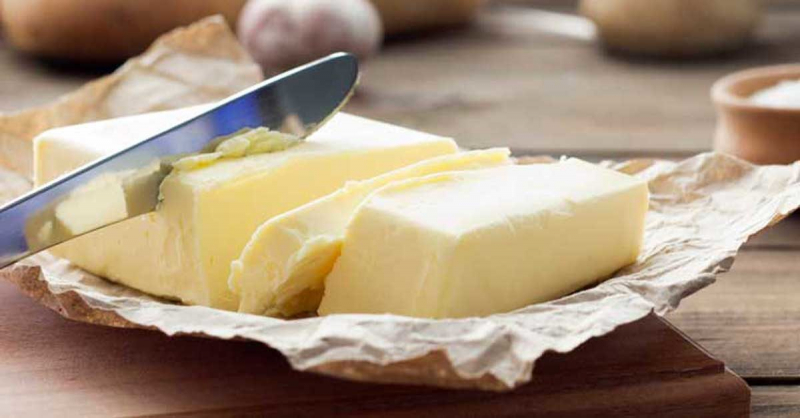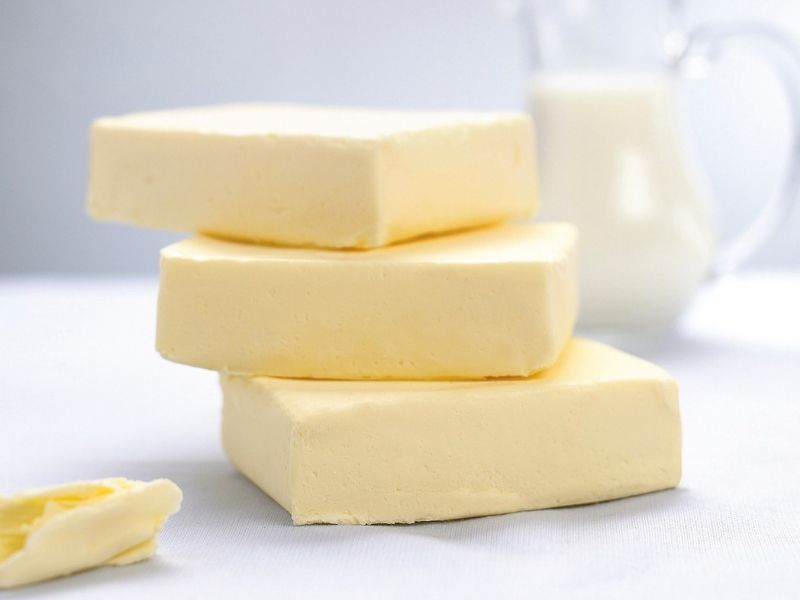Butter

Butter is a dairy product created from churned cream's fat and protein components. At room temperature, it is a semi-solid emulsion made up of approximately 80% butterfat. It is used as a spread at room temperature, as a condiment when melted, and as a fat in baking, sauce-making, pan-frying, and other cooking techniques. It is prepared by separating the fat globules from the buttermilk by churning milk or cream. It is normally pale yellow in appearance but can range from deep yellow to practically white. Its natural, unaltered hue is determined by the nutrition and genetics of the source animal, but the commercial manufacturing process sometimes alters the color with food colorings such as annatto or carotene.
A teaspoon of butter contains 2.1 micrograms of vitamin K2. That same tablespoon, however, has approximately 100 calories and 11 grams of fat, so keep your servings small to prevent potential health problems and unnecessary weight gain. Butter, in moderation, can be a nutritious part of your diet.
It's high in minerals like bone-building calcium and contains chemicals that have been linked to a lower risk of obesity. Butter can also be used in a low-carbohydrate diet, which may help people maintain or lose weight more quickly than a low-fat diet. It can aid in bone strength. Butter includes vitamin D, which is essential for bone growth and development. It also contains calcium, which is necessary for bone strength. Calcium also aids in the prevention of disorders such as osteoporosis, a condition that causes bones to become weak and fragile. It can assist to improve the health of your skin. Butter also includes vitamin E, which is beneficial to skin health. The nutrient decreases UV sun ray damage, reduces skin inflammation, and enhances skin elasticity.











